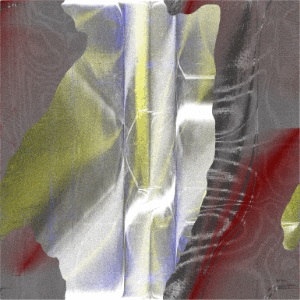Slamming 808 kick/snare combos to get the head nodding, gritty basslines to hold down the low end, floating pads, and melodies to keep the brain engaged.

Deep machine funk
Over the last few years, Chris Smith’s Sheffield-based Central Processing Unit has carved out a very specific aesthetic for itself. There’s the visually distinctive album covers: CPU artists forego individualized label art, and instead each has the same split-diamond design with the catalog number represented as binary code in the center. Sonically, the label’s output hits a remarkably consistent vibe that’s absolutely grounded in the hybrid electro/IDM sound that Smith’s hometown heroes Autechre and Warp Records, the label they’re most closely associated with, started out with three decades ago. In a detailed interview at Resident Advisor, Smith embraces that lineage:
Smith told me that he started CPU with the idea of continuing Warp’s ’90s legacy—he wanted to be the label’s “spiritual successor”—before the electronic juggernaut moved to London and diversified its catalogue.
Which is not at all to say the CPU releases—of which NULLPTR’s latest full length, the ostensible subject of this review, is number 01011000 (88 for us humans)—merely retread well-worn paths between Detroit, Berlin, and Sheffield. The reason I’ll pick up any CPU release they put out, sight unseen, is a rare combination of melodic complexity and emotion. It’s what pushes label stalwarts like Jensen Interceptor, Cygnus, Mikron—and now, NULLPTR—into a tier of artists that transcend niche and genre.
Drexciya is probably the closest touch-point, and in fact any of the tracks on Future World would stand up mixed into classics like “Wave Jumper” or “Digital Tsunami.” Indeed, the second track “Wave Cannon” may be a reference to the aquatic, Afrofuturist Drexciyan mythos; its deep machine funk carves a very similar groove.
It’s probably not worth an exhaustive track-by-track breakdown of Future World—some are slightly harder and faster, some more laid back and ambient. But the basic sonic elements provide a consistent experience throughout: slamming 808 kick/snare combos to get the head nodding, gritty basslines to hold down the low end, floating pads, and high end squiggles and melodies to keep the brain engaged. One of the highlights for me was “Phantom Cell,” which brings these elements together in the context of two different buildup/breakdown sequences, to provide some dynamic range and variation. On the other end of the spectrum, the album’s title track closes it out with a smooth ambient off-ramp back to the terrestrial world.
Eddie Symons, the human behind NULLPTR, has been mining this electro/IDM vein for nearly two decades (first as Bovaflux). That experience shines through in his ability to keep within the conventions of the genre while providing an engaging, ever-evolving journey through the entire runtime of Future World.
Future World is available on Central Processing Unit.
























![BASTARD :: BASTARD.NFO EP (Renraku) — [concise]](https://igloomag.com/wp/wp-content/uploads/2025/05/bastard-nfo_feat-75x75.jpg)


